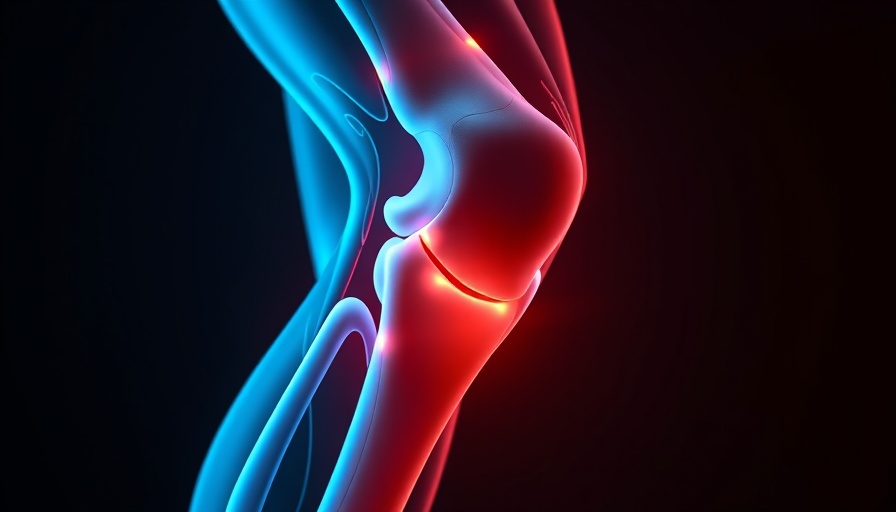
Radiation Therapy: A Surprising Ally in Knee Arthritis Management
The world of medical treatments is ever-changing, and a recent focus has been on the potential benefits of low-dose radiation therapy (LDRT) for managing knee arthritis pain. Traditionally relegated to obscure options, LDRT is gaining traction among medical professionals as an effective, non-invasive treatment alternative for those suffering from osteoarthritis. Recent studies, including one from the Cleveland Clinic, highlight its resurgence and effectiveness, prompting a closer examination of this unexpected ally in the fight against joint pain.
The Historical Context of Radiation in Arthritis Treatment
Interestingly, the application of radiation therapy to treat arthritis isn't a novel concept. The idea has been around for more than a century, initially gaining ground soon after the advent of X-ray technology. By the late 20th century, its popularity began to wane due to the emergence of pharmaceutical interventions considered relatively more effective. As noted by Dr. Chirag Shah from the Cleveland Clinic, low-dose radiation therapy had become infrequent in the U.S., utilized by fewer than 10% of healthcare providers by the late 1980s. In stark contrast, over 85% of providers in Central Europe continued to endorse this therapy, indicating a surprising divide in treatment philosophies across the globe.
What Recent Studies Reveal About LDRT
Recent evaluations have started reinvigorating interest in LDRT, particularly for patients over the age of 50 facing debilitating arthritis symptoms. Studies suggest that low doses of radiation can invoke anti-inflammatory responses, providing notable pain relief without the extensive side effects associated with traditional painful treatments.
At the Cleveland Clinic, the LDRT approach has been aligned with standardized procedural pathways to improve patient outcomes. This initiative aims not only to provide better care but also to encourage more comprehensive tracking of results and side effects, ensuring patients start off on the right foot. Moreover, treatment can target multiple affected joints simultaneously, emphasizing significant efficiency. As highlighted by CARTI Cancer Center, LDRT can alleviate pain for up to two years, offering patients respite and renewed quality of life.
Benefits and Considerations of LDRT
One of the most appealing aspects of LDRT is its non-invasive nature. For patients tired of steroid injections or the prospect of surgery, this therapy presents an attractive alternative. By sparing patients lengthy downtime and invasive procedures, LDRT may lead to better compliance and coordination of care. However, it is crucial to recognize that LDRT is not a panacea; potential side effects and the variability in patient reactions remain important considerations.
Further, while preliminary studies show that up to 70% of patients experience relief from pain, not all trials have been uniformly positive, and caution is warranted regarding expectations.
Navigating Treatment Options: What Patients Need to Know
For people grappling with arthritis, understanding treatment routes is essential. The notion of incorporating radiation therapy into arthritis management can be empowering. It not only provides an alternative path for improvement but also broadens the landscape of potential interventions available for pain management.
Experts like Dr. Shah stress the importance of thorough discussions with healthcare providers to assess when and how LDRT might fit into an overall treatment plan, particularly for advanced cases where traditional options have proven inadequate or inappropriate.
Looking Ahead: What’s Next for Radiation Therapy?
The increasing adoption of low-dose radiation for arthritis management may pave the way for new clinical practices and frameworks for treatment not just in the U.S. but worldwide. It may also stimulate further research efforts seeking to understand optimal dosing, patient profiles most likely to benefit, and long-term effects associated with chronic use.
As the landscape of arthritis treatment continues to evolve, LDRT's inclusion reflects a broader trend toward holistic, patient-centered care that prioritizes quality of life alongside clinical efficacy.
For those suffering from knee arthritis pain, understanding these treatment options is critical. If you or someone you know is exploring effective means of pain management, consider discussing the role of low-dose radiation therapy with a healthcare provider for tailored advice and support.
 Add Row
Add Row  Add
Add 




Write A Comment